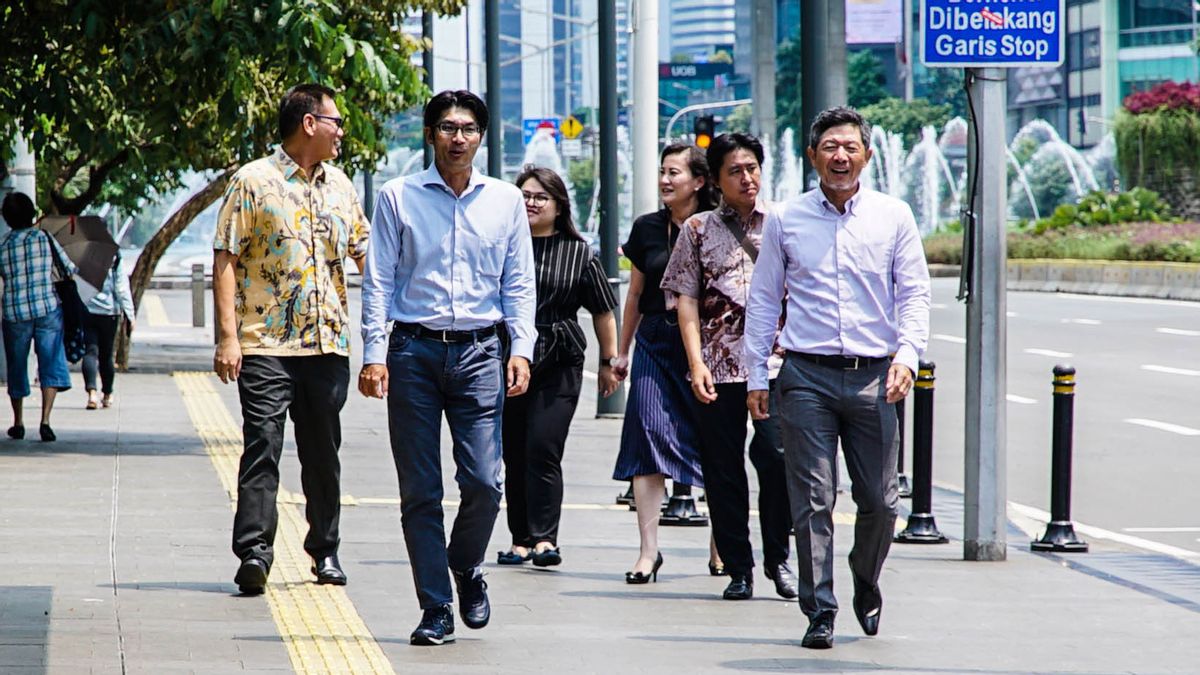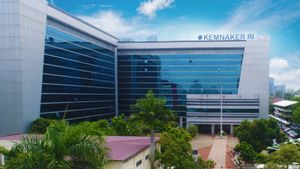JAKARTA - Head of the Central Statistics Agency (BPS) Suhariyanto said that during the COVID-19 pandemic there has been a decline in people's income. The results of the survey conducted show that this decline occurs in all levels of society.
Suhariyanto said, although all layers were affected. However, the low-income layers of the population experienced a deep decline, namely around 1.8 million per month.
"Where 7 out of 10 or 70.53 percent of low-income people experienced a decline. But for the upper middle class it was only 3 out of 10 or 30.34 percent. This means that the impact of COVID-19 is deeper for low-income people," he said. , in a working meeting with Commission XI DPR RI, Monday, June 22.
Suhariyanto explained that the decline in income has an impact on changing consumption patterns. Where in terms of primary or basic needs cannot be reduced. However, spending on fuel was reduced, while credit usage increased.
Furthermore, he explained, this condition was inseparable from the cessation of social and economic activities of the Indonesian people due to the Large-Scale Social Restriction (PSBB) policy. So as to make the majority of community movements stop and they can only study and worship at home during the PSBB.
"Community activities in places of commerce, retail, recreation, parks, transportation transit places, even when the WFO (Work From Office) is set to remain low," he said.
As is well known, the Indonesian economy is largely contributed by the consumption sector. However, due to the COVID-19 pandemic consumption is not as big as before.
Economic Growth Contraction in Second QuarterSuhariyanto said that economic growth in the second quarter will experience a contraction. This is indicated by various economic indicators that exist until May. One of them is economic growth in the first quarter.
According to Suhariyanto, in the January-March period, the economy only grew 2.97 percent, below the government's prediction of around 4 percent.
"For an economy with existing indicators until May 2020, we can be sure that the second quarter economic growth will contract," he explained.
One indicator of slowing economic growth is agriculture. Suhariyanto explained this was due to the shift in the peak of the harvest season from the first quarter to the second quarter. Based on BPS observations using an area sample frame, rice production is estimated to have increased by six to seven percent.
Furthermore, he hopes, with the increase in rice production, this achievement will be able to hold the contraction rate further in the second quarter.
Then, the decline also occurred in the car sales sector. From April to May, sales had fallen by 93.21 percent compared to the same period last year. This decline was very deep compared to the first quarter, which refers to the Official Statistics News (BRS), a contraction of 6.88 percent compared to the first quarter of 2019.
The same thing happened in the motorcycle sales sector. Suhariyanto is more representative of the lower middle class expenditures. In April, sales fell by 79.31 percent compared to April 2019.
Decrease in Raw Material ImportsNot only that, the import of raw materials also experienced the same thing. In April-May 2020, there was a decrease of 30.63 percent compared to the same period in 2019. The Manufacturing PMI was still at the level of 27.5 in April and 28.6 in May, far from the expansion limit set at the level of 50.0 .
Suhariyanto said that in terms of expenditure, all components experienced a deep decline in the first quarter. Especially for household consumption, there was a significant decline, from 5.02 percent in the first quarter of 2019 (yoy) to 2.84 percent in the first quarter of 2020 (yoy) .
Furthermore, he said, the cause was a deep decline in demand for non-food consumption. Growth in consumption fell from 4.7 percent to 1.38 percent in the first quarter of this year.
"Because there is a decrease in the consumption of clothing, footwear, transportation, communications, sales of motorbikes and cars and so on," he explained.
For complete information, please visit the website and download #BeritaResmiStatistik yes! #ReleaseBPS #ExportImport pic.twitter.com/8PvmvIgtiF
- Central Bureau of Statistics (@bps_statistics) June 15, 2020
Meanwhile, the number of air transport passengers also experienced a decline in the first quarter which contracted by 13.62 percent to negative 87.91 percent.
Then, the value of electronic transactions such as credit and debit cards also contracted deeper. From the original contraction of 1.07 percent in the first quarter to a contraction of 18.96 percent in the April to May period.
"By paying attention to these indicators, we can predict that there will be enough contraction in the second quarter," he said.
The English, Chinese, Japanese, Arabic, and French versions are automatically generated by the AI. So there may still be inaccuracies in translating, please always see Indonesian as our main language. (system supported by DigitalSiber.id)













